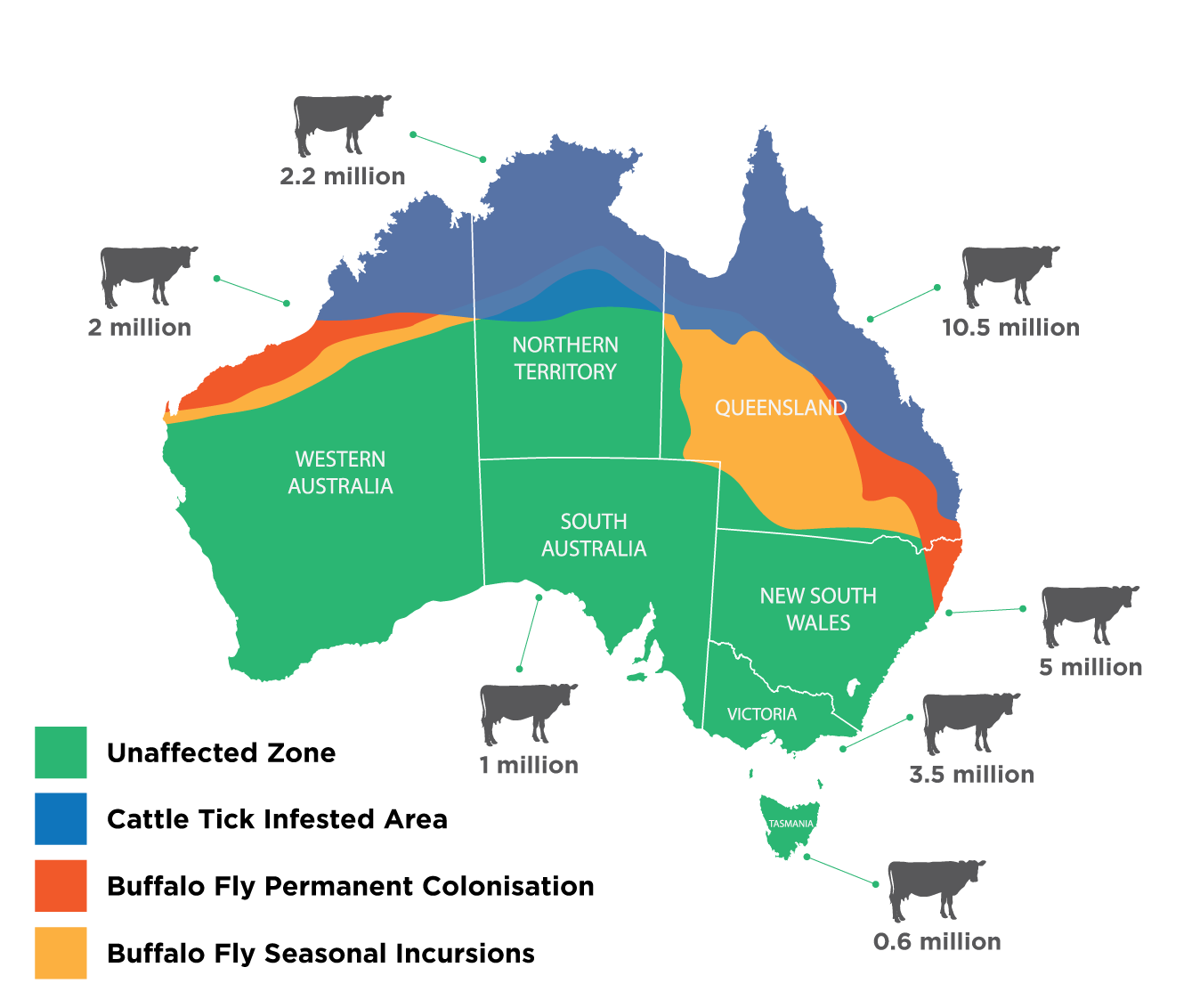The treatment landscape
How common is cattle tick?

Approximately one-third of these areas have high or medium incidence of cattle tick, equating to significant infestations every 1 – 2 years.
How is cattle tick managed?
Currently agrichemicals are the only realistic treatment for ectoparasites, but the future for traditional treatments is grim.
Resistance to available classes of agrichemicals is widespread and increasing. No new actives are under development and vaccines have not lived up to their promise.
At the same time chemical residues are becoming increasingly important in all food markets.
In parallel, breed selection and regulated zones are used to reduce the problem. In Queensland, regulated tick-free zones cost $1.7 million annually. There are no regulated zones in the Northern Territory or Western Australia.
Buffalo fly
Buffalo fly is also a serious pest to cattle producers in northern Australia, with its distribution similar to cattle tick. With the warming climate, buffalo fly is spreading south. Resistance to synthetic pyrethroids, the mainstay of treatment, is growing.
What can Pro-TICK® offer to the cattle management?
Successful development of Pro-TICK® offers many potential benefits for the northern beef industry including
- Low cost
- Chemical residue free
- Reduced use of agrichemicals
- Removal of withholding periods for export
- Improved animal health and welfare
- Boost productivity and profitability
- Open up new grazing areas.
The net gain from moving all herds experiencing tick infestation to the lowest level of disease is estimated at $60 million per annum.
Pro-Tick® is aimed at improving animal health and welfare, and providing better environmental outcomes.
Phone: +61 2 9757 4515
Email: info@pro-tick.net
Address: Building C, 28-54 Percival Rd, Smithfield 2164, NSW, Australia


